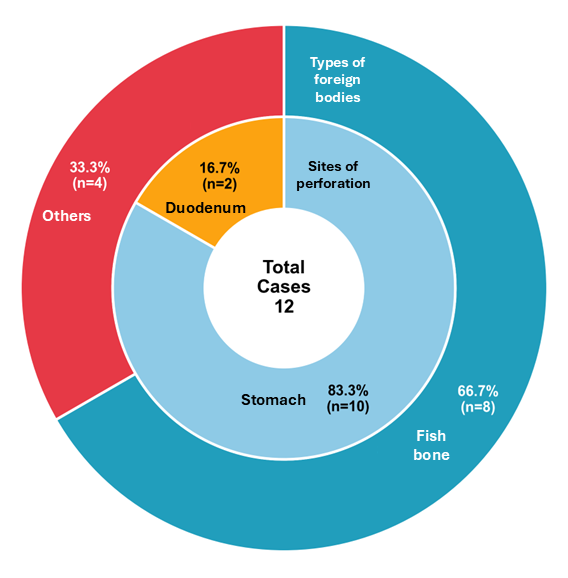Monday Poster Session
Category: Biliary/Pancreas
P2202 - Pancreatic Abscess Secondary to Foreign Body: A Systematic Review of Clinical Features and Management
Monday, October 27, 2025
10:30 AM - 4:00 PM PDT
Location: Exhibit Hall
- MW
Muhammad Waqar, MD, BSc (he/him/his)
Griffin Hospital
Derby, CT
Presenting Author(s)
Muhammad Waqar, MD, BSc1, Thanathip Suenghataiphorn, MD1, Shree Rath, MBBS2
1Griffin Hospital, Derby, CT; 2All India Institute of Medical Sciences Bhubaneswar, Bhubaneswar, Orissa, India
Introduction: Foreign bodies accidentally ingested may perforate the walls of the stomach or duodenum and lead to chronic inflammation, causing pancreatic abscesses. This systematic review of case reports aims to study the prevalence of this rare condition across reported cases, identify common foreign bodies responsible and assess patient outcomes.
Methods: A comprehensive literature search was conducted across three databases from inception till February 2025 for all case reports and case series reporting pancreatic abscess arising secondary to foreign body impaction. Strict criteria were used to select the studies: English language; Pancreatic abscesses secondary to a foreign body only, excluding pancreatic abscesses without foreign bodies or pancreatic foreign bodies without abscesses. Descriptive analyses were used in the study.
Results: Twelve case reports with a mean patient age of 54.5±12.13 years were included for analysis. 66% were males. The most reported foreign body was fish bone (66.7%). The size of the foreign bodies ranged from 2.3cm to 4cm, and the most common site of perforation was the stomach (83.3%). The foreign body was commonly localized at the head of the pancreas. All cases were diagnosed with computed tomography (CT) scan. Patients were predominantly asymptomatic, with abdominal pain emerging as the primary reported symptom (91.7%). Patients were treated with surgery, mainly laparotomy. Endoscopic treatment was done only in 1 case. The average length of stay was 10.9±6.42 days, with no statistically significant factors influencing duration. No mortality was reported across all studies.
Discussion: Fish bones were the most common foreign body responsible for causing pancreatic abscesses following perforation of gastric tract. Absence of overt symptoms, apart from abdominal pain, underscores the importance of maintaining a high clinical suspicion in such cases. Recovery in all cases was uneventful, though requiring invasive surgery. Future studies should focus on understanding factors predisposing patients to foreign body-mediated perforations and improving management strategies, such as endoscopic retrieval and transmural drainage of collections, ensuring safer and more cost-effective care.

Figure: Pancreatic Abscess Secondary to Foreign Body Characteristics
Disclosures:
Muhammad Waqar indicated no relevant financial relationships.
Thanathip Suenghataiphorn indicated no relevant financial relationships.
Shree Rath indicated no relevant financial relationships.
Muhammad Waqar, MD, BSc1, Thanathip Suenghataiphorn, MD1, Shree Rath, MBBS2. P2202 - Pancreatic Abscess Secondary to Foreign Body: A Systematic Review of Clinical Features and Management, ACG 2025 Annual Scientific Meeting Abstracts. Phoenix, AZ: American College of Gastroenterology.
1Griffin Hospital, Derby, CT; 2All India Institute of Medical Sciences Bhubaneswar, Bhubaneswar, Orissa, India
Introduction: Foreign bodies accidentally ingested may perforate the walls of the stomach or duodenum and lead to chronic inflammation, causing pancreatic abscesses. This systematic review of case reports aims to study the prevalence of this rare condition across reported cases, identify common foreign bodies responsible and assess patient outcomes.
Methods: A comprehensive literature search was conducted across three databases from inception till February 2025 for all case reports and case series reporting pancreatic abscess arising secondary to foreign body impaction. Strict criteria were used to select the studies: English language; Pancreatic abscesses secondary to a foreign body only, excluding pancreatic abscesses without foreign bodies or pancreatic foreign bodies without abscesses. Descriptive analyses were used in the study.
Results: Twelve case reports with a mean patient age of 54.5±12.13 years were included for analysis. 66% were males. The most reported foreign body was fish bone (66.7%). The size of the foreign bodies ranged from 2.3cm to 4cm, and the most common site of perforation was the stomach (83.3%). The foreign body was commonly localized at the head of the pancreas. All cases were diagnosed with computed tomography (CT) scan. Patients were predominantly asymptomatic, with abdominal pain emerging as the primary reported symptom (91.7%). Patients were treated with surgery, mainly laparotomy. Endoscopic treatment was done only in 1 case. The average length of stay was 10.9±6.42 days, with no statistically significant factors influencing duration. No mortality was reported across all studies.
Discussion: Fish bones were the most common foreign body responsible for causing pancreatic abscesses following perforation of gastric tract. Absence of overt symptoms, apart from abdominal pain, underscores the importance of maintaining a high clinical suspicion in such cases. Recovery in all cases was uneventful, though requiring invasive surgery. Future studies should focus on understanding factors predisposing patients to foreign body-mediated perforations and improving management strategies, such as endoscopic retrieval and transmural drainage of collections, ensuring safer and more cost-effective care.

Figure: Pancreatic Abscess Secondary to Foreign Body Characteristics
Disclosures:
Muhammad Waqar indicated no relevant financial relationships.
Thanathip Suenghataiphorn indicated no relevant financial relationships.
Shree Rath indicated no relevant financial relationships.
Muhammad Waqar, MD, BSc1, Thanathip Suenghataiphorn, MD1, Shree Rath, MBBS2. P2202 - Pancreatic Abscess Secondary to Foreign Body: A Systematic Review of Clinical Features and Management, ACG 2025 Annual Scientific Meeting Abstracts. Phoenix, AZ: American College of Gastroenterology.
